In an unforgettable and deeply moving presentation at Pahrump Valley High School on Friday, March 21, 96-year-old Holocaust survivor Ben Lesser sat before a silent crowd of students and faculty to share a story that has haunted him—and the world—for nearly a century. Accompanied by his granddaughter Robyn Weber, and representing the ZACHOR Holocaust Remembrance Foundation, Lesser gave voice to the six million silenced souls and brought the horrors of the Holocaust to life in vivid, painful detail – not from the pages of a textbook, but from lived experience – offering a sobering glimpse into one of history’s darkest chapters.
“This is a history story you’re going to hear once in your lifetime,” he said early on, urging students to move closer and listen. And they did. For nearly two hours, the auditorium sat in reverent stillness as Lesser described the loss of his family, the atrocities he witnessed, and the unthinkable pain he endured, all while somehow clinging to his will to live.
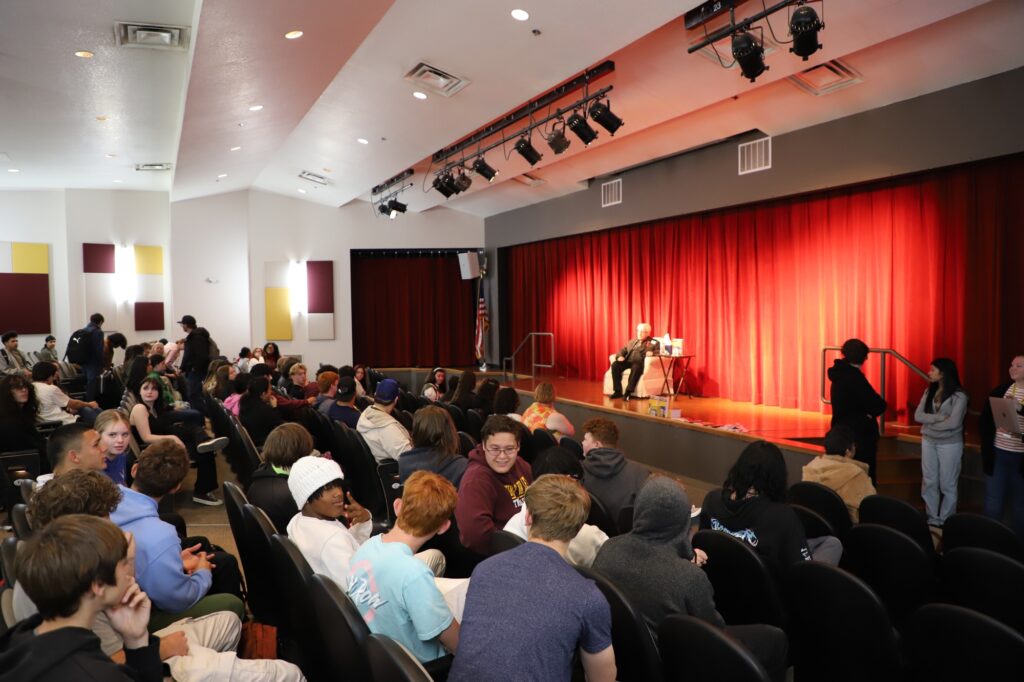

Ben Lesser was born in Krakow, Poland, to a warm and thriving family of seven. His father owned a wine and syrup manufacturing business and a chocolate factory—the first in Poland to produce chocolate-covered wafers. Lesser remembered the simple joy of rummaging through his father’s pockets for sweets after work. But those childhood memories were shattered in September 1939 when Nazi tanks rolled into Krakow. He was ten and a half years old.
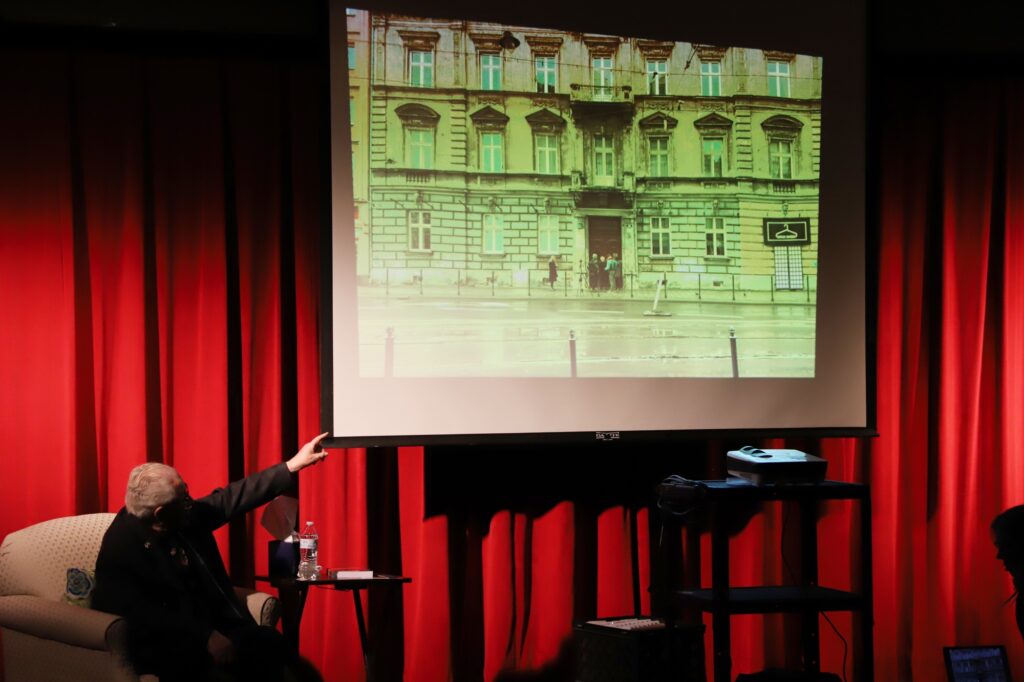

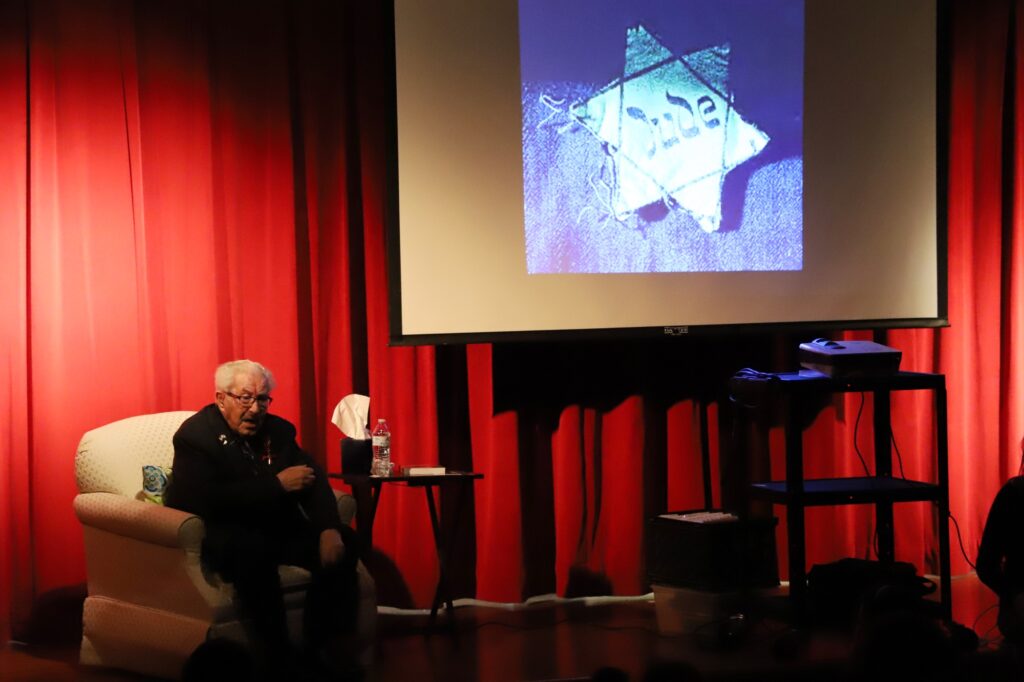
“I ran to the window and saw the tanks,” Lesser said. “The soldiers jumped out, one after the other. There was no fighting. They just marched in.”
That same day, his father sat the children down. “From this moment on, you’re no longer children,” he said. “You’re adults. You will obey. No backtalk.”
Five days into the occupation, Nazi soldiers raided their apartment. Their building superintendent had shown the soldiers exactly where the Jewish families lived. The soldiers burst in, pistol-whipping his father and looting everything of value. Then came a moment seared into Ben’s memory. From the neighboring apartment came terrifying screams. Ben and his older sister Lola ran to the kitchen door and saw a Nazi soldier holding an infant by its legs. The soldier demanded the baby be silenced. Then, smirking, he smashed the baby’s head against the doorframe.
“That scream turned into silence, and that silence has stayed with me,” Lesser said.
After that day, everything changed. Jews were ordered to wear identifying armbands. Curfews were enforced under threat of death. People were shot in the streets for minor infractions, and bodies were collected by pushcart. The family narrowly avoided being forced into the Krakow ghetto thanks to Michael Lieber, a young man in love with Lola. He convinced the Lessers to flee with him to the small town of Niepołomice.
That decision saved their lives. Everyone who remained in the Krakow ghetto was later deported to the Belzec extermination camp and killed—including Ben’s extended family of more than 200 people. In Niepołomice, the family rented a room in a farmhouse. Michael brought them a sack of flour, and Ben’s father began baking pretzels to sell at local taverns.
“I was 12, baking with my father,” Ben recalled. “Even now, I still bake.”
Michael and Lola married during this time. In a photo from their wedding, only three people would survive the Holocaust: Ben, Lola, and Michael.
When the town’s mayor—a non-Jewish acquaintance—warned of an impending Nazi raid, the family fled again, this time to the Bochnia ghetto. Though infamous for its brutality, it was their only option. There, Nazis routinely ripped children from their beds, throwing them into dump trucks while shooting any parents who dared to follow. To survive, families built hidden bunkers.
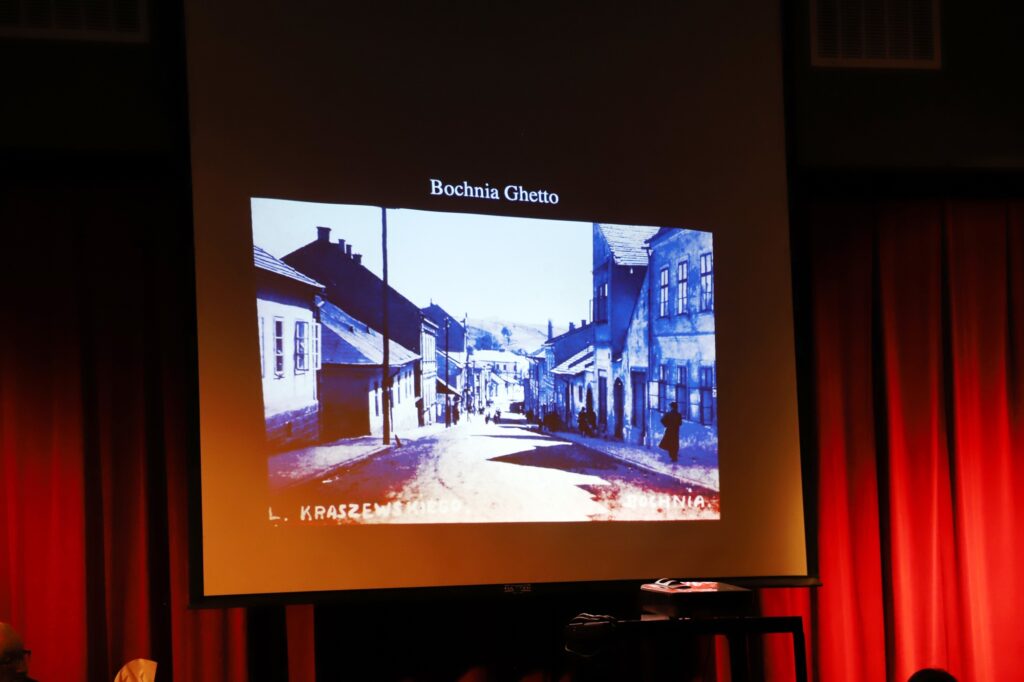
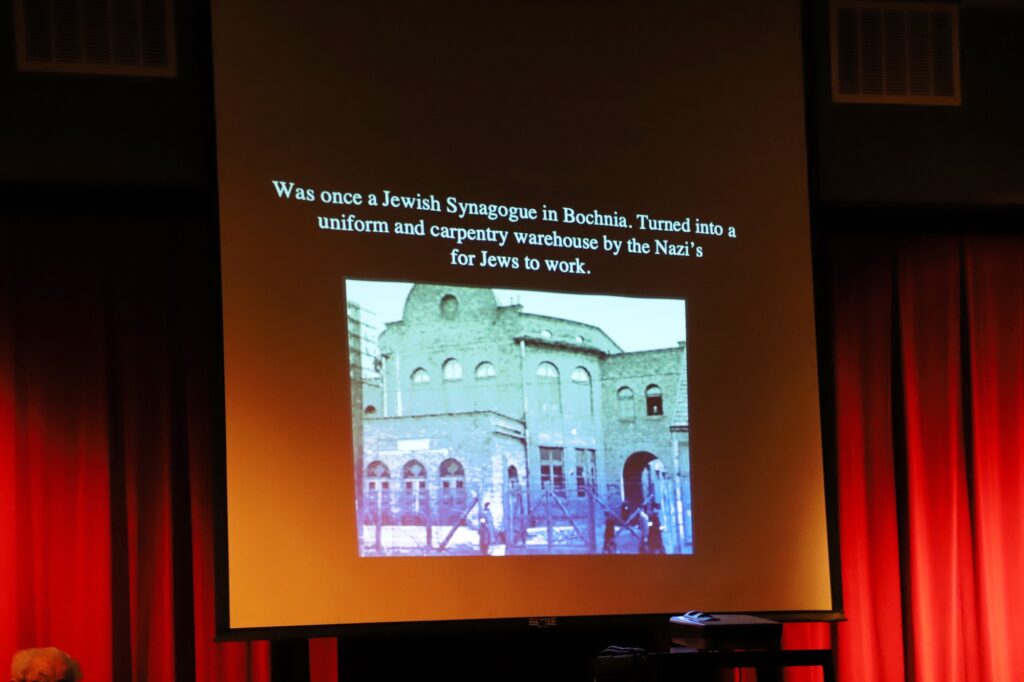
One night, Farber, a friend who worked as a Jewish policeman in the ghetto, warned of a raid. Ben’s family hid in a cramped space behind a wardrobe—twelve people packed together, shivering as snow fell and dogs barked outside. When they emerged at dawn, the streets were littered with dismembered bodies.
At the same time, Lola and Michael sought shelter in a hidden doghouse built to conceal seven people. But another Jewish officer, Moritz Schiller, threatened to report them unless his mother and sister were allowed in. There was no room for nine. Rather than endanger everyone, Lola and Michael gave up their space.
Farber offered them another hiding place: a large water tank beside a tannery. Inside were his sister and her two young children. Lola and Michael lowered themselves into the freezing water. The group stood submerged, barely breathing, as rats swam around them and gnawed at their feet. All night they listened to the chaos outside.
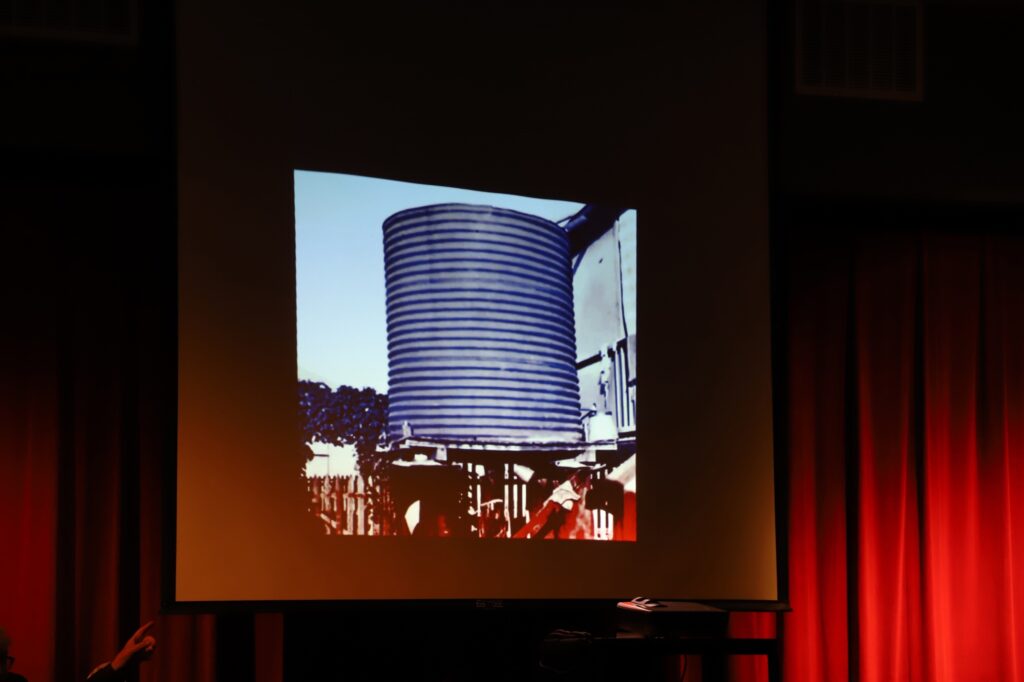
When the raid ended, they emerged—alive. But their relief turned to devastation when they returned to the doghouse. All seven occupants had been executed, including Marika, a seven-year-old girl from Michael’s family, and her parents. Marika was still holding the doll Lola had made for her.
Bound by religious tradition, Michael and Lola retrieved a wheelbarrow and carried the bodies to the cemetery. But even there, cruelty followed. Schiller returned, demanding the grave for his own family. They were forced to exhume the dead and dig a new grave. As they worked, Nazi soldiers arrived, called out to Schiller and then shot him in the head, removing “all” witnesses.


The family continued to seek escape. They bribed a truck driver to create a hidden compartment beneath coal. Hidden like sardines, Ben and his younger brother Tuli took one of the first trips. Nazi soldiers hitch-hiking, unknowingly rode on top of the escaping Jews, atop of the coal for three hours. When the truck arrived, they were led by a smuggler through the forest, crawling beneath barbed wire and sliding silently down ravines to cross the border.
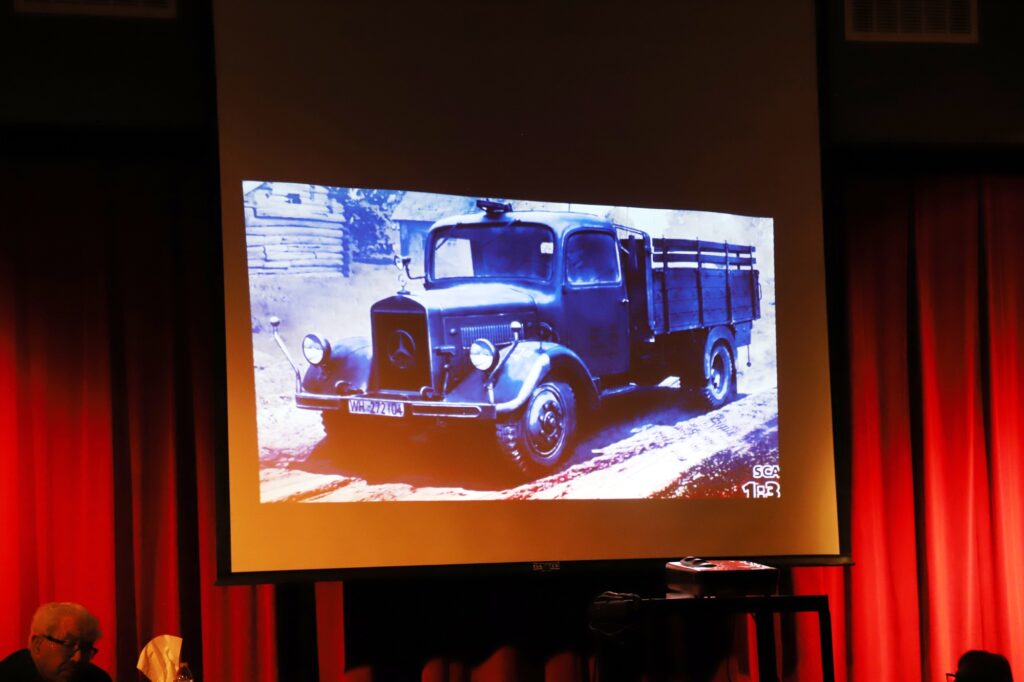

Eventually, they reached Hungary. Ben reunited briefly with his sister Goldie, and his uncle provided everyone with shoes containing hidden diamonds in the heels—to be used only in life-threatening situations. Ben’s parents, who were to take a later truck, never arrived. They were caught boarding the truck and executed alongside the driver and other passengers.
When Nazis invaded Hungary, Jews were promised resettlement and education. Instead, they were packed into cattle cars and driven to a concentration camp. Ben remembered 80 people squeezed in with no food, no water, no sanitation. When they arrived at Auschwitz-Birkenau, men were separated from women and children. Ben, at fifteen and a half, lied to soldiers claiming to be 18 and was separated from his siblings. Ben never saw Goldie or Tuli again. Unbeknownst to him at the time, both were sent directly to the gas chambers.
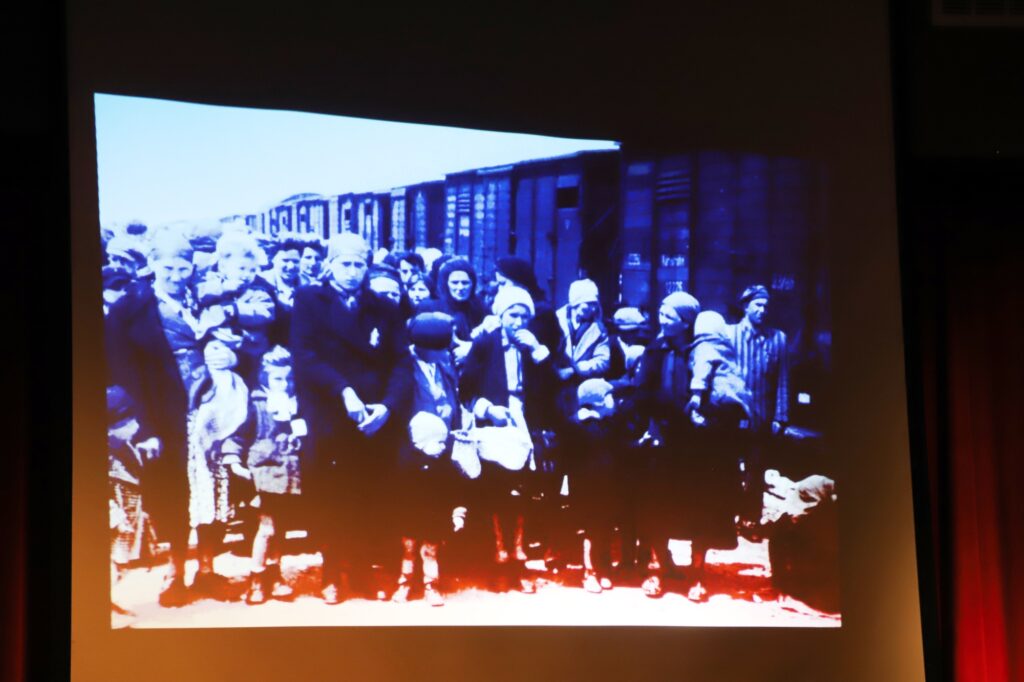
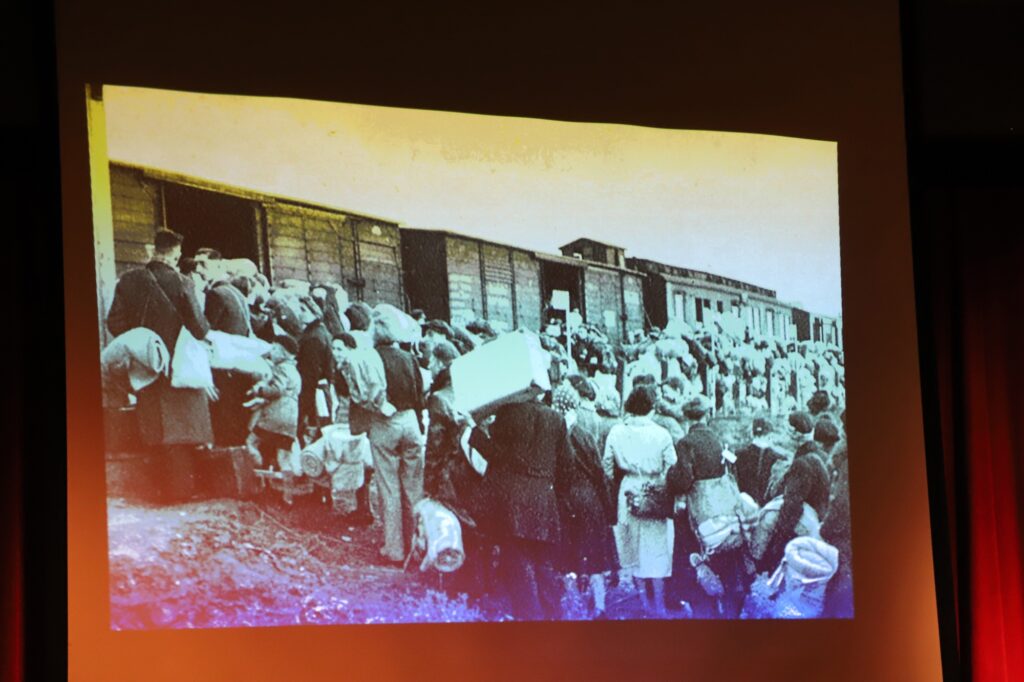
After hearing a story of fire pits and the need to get rid of people more quickly than the gas chambers and crematoriums allowed, Ben didn’t believe it. He later made what he calls the biggest mistake of his life. He snuck out at night and witnessed the unimaginable: children being thrown alive into fiery pits.
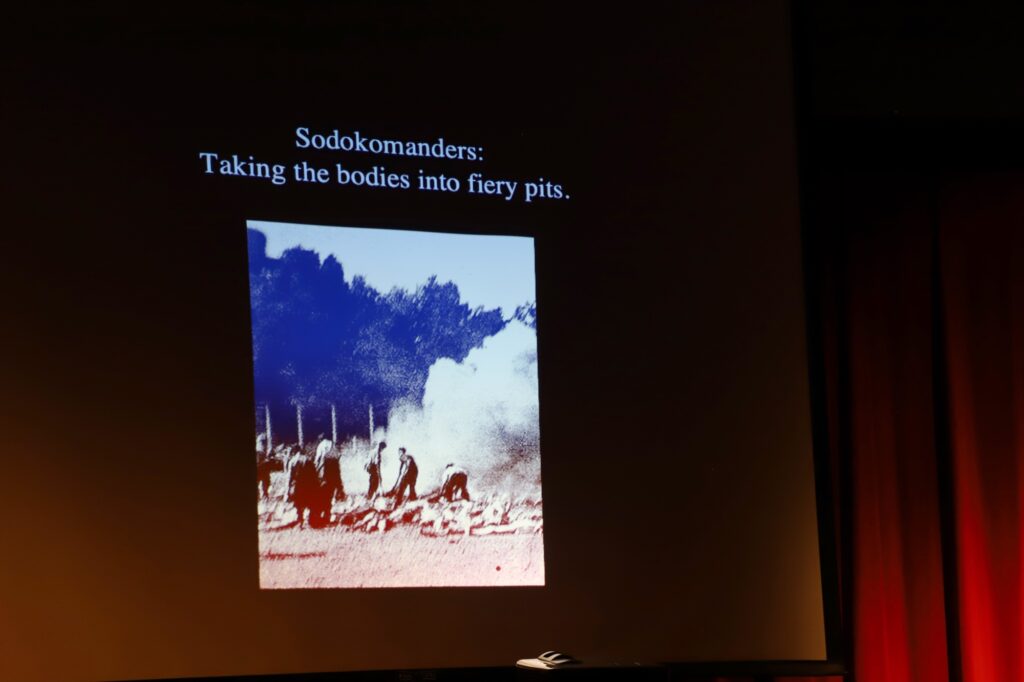
After two and a half weeks in Auschwitz, Ben was sent to the labor camp Durnhau, where prisoners broke rocks in a quarry. When three inmates escaped, the SS randomly selected every tenth man to be flogged. Ben saw his uncle would be chosen and took his place. The first three men died, unable to meet the difficult rules demanded of them. Ben somehow endured the torture, surviving, just as the escaped men returned and the rest of the men were sent back to the line without punishment. The escapees were hung for all to see and to serve as a reminder to do as they were told.
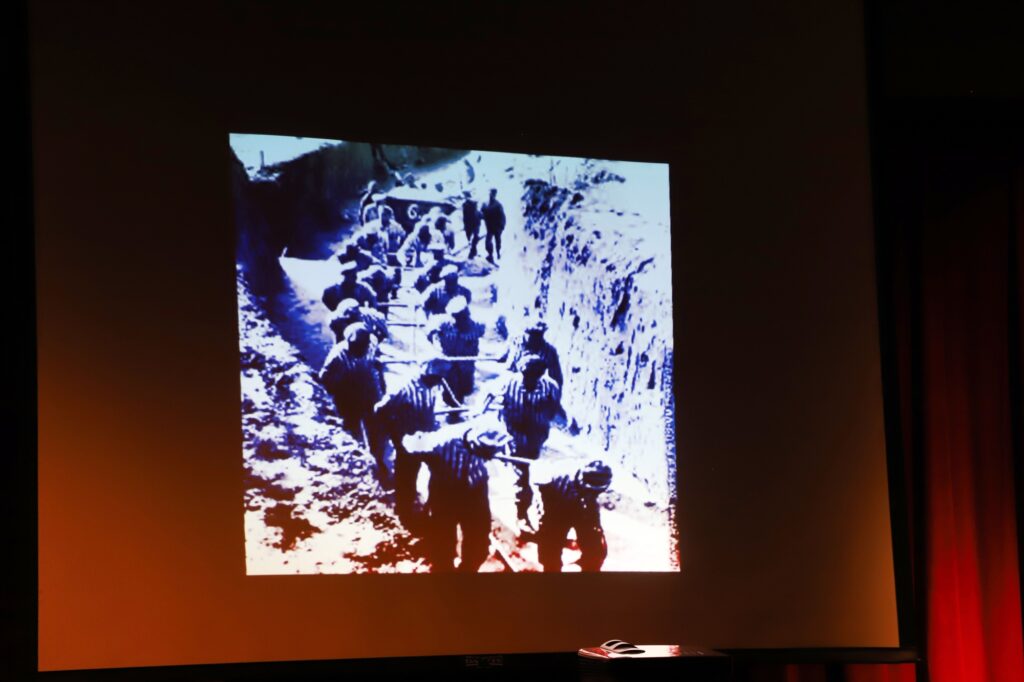
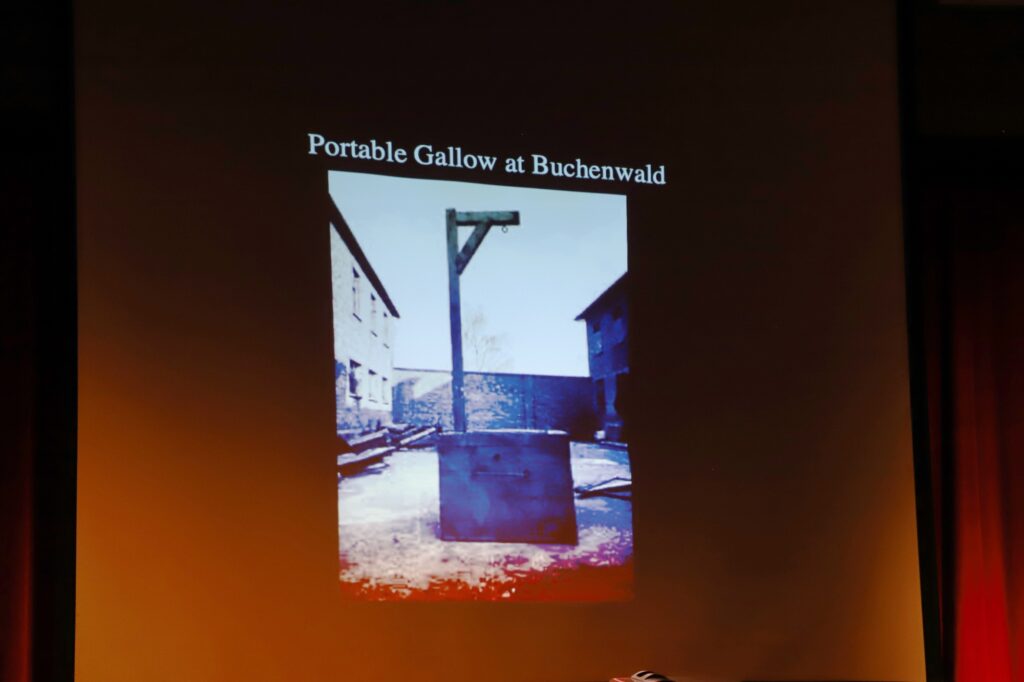
After, came the seven-week death march through snow and ice, with no shoes. Prisoners who collapsed were shot. Ben arrived at Buchenwald, then was transferred again—this time in a train with 7,000 people. Only 18 survived the journey. In Ben’s cattle car, only four made it out alive.
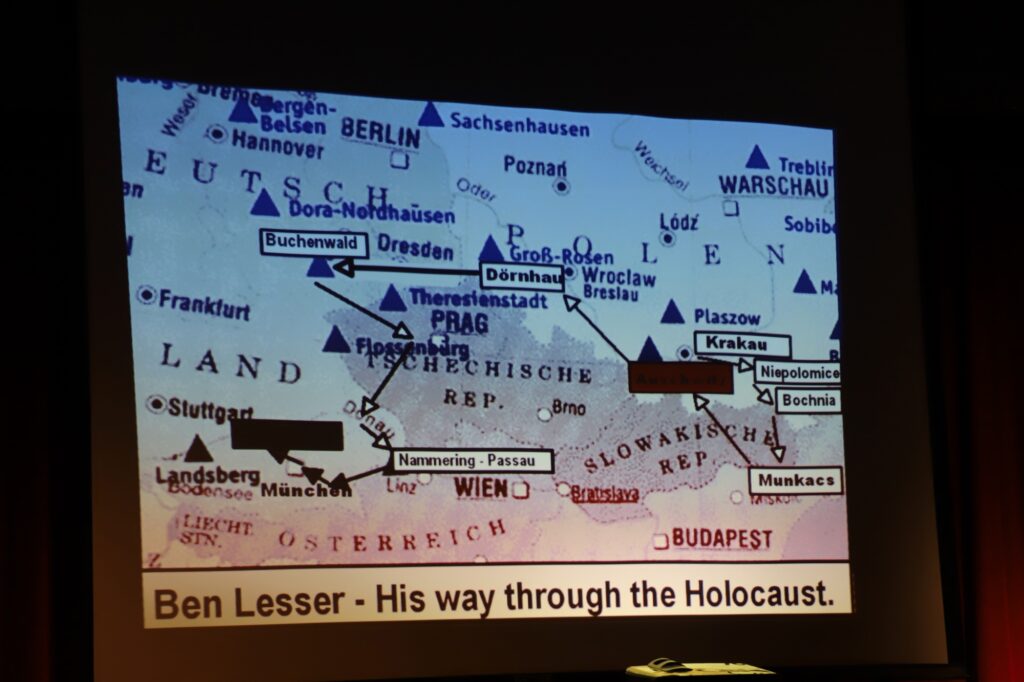
At Dachau, Ben was placed in a barrack beside a pile of unburned bodies. American troops liberated the camp days later. A GI gave Ben and his cousin a can of Spam. His cousin died that night, unable to digest the food. Ben collapsed from a combination of hunger, thirst and grief.
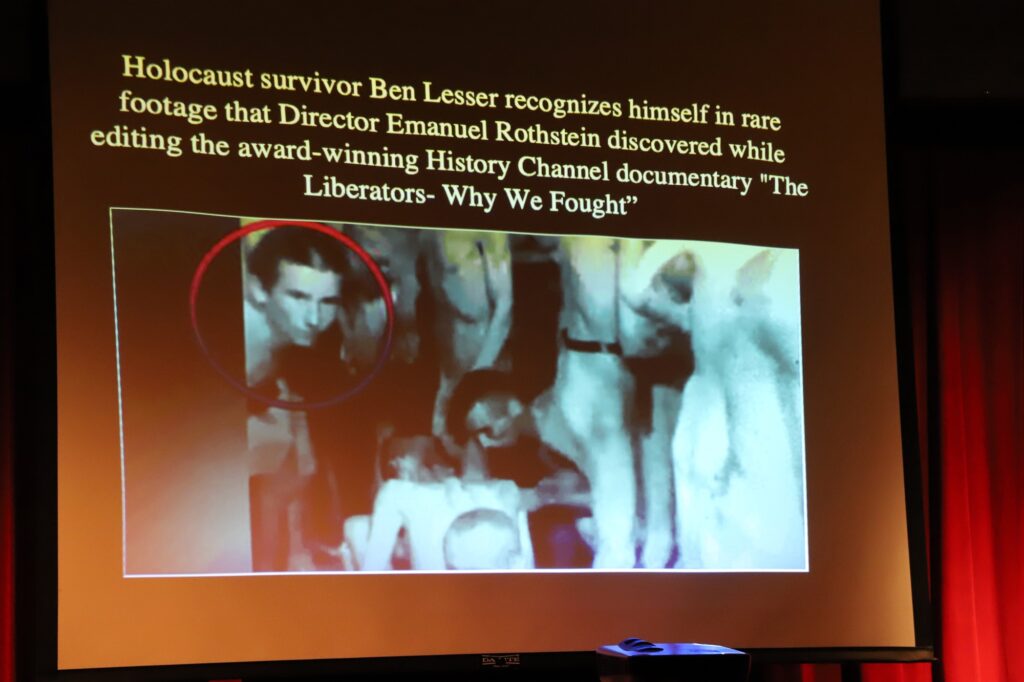
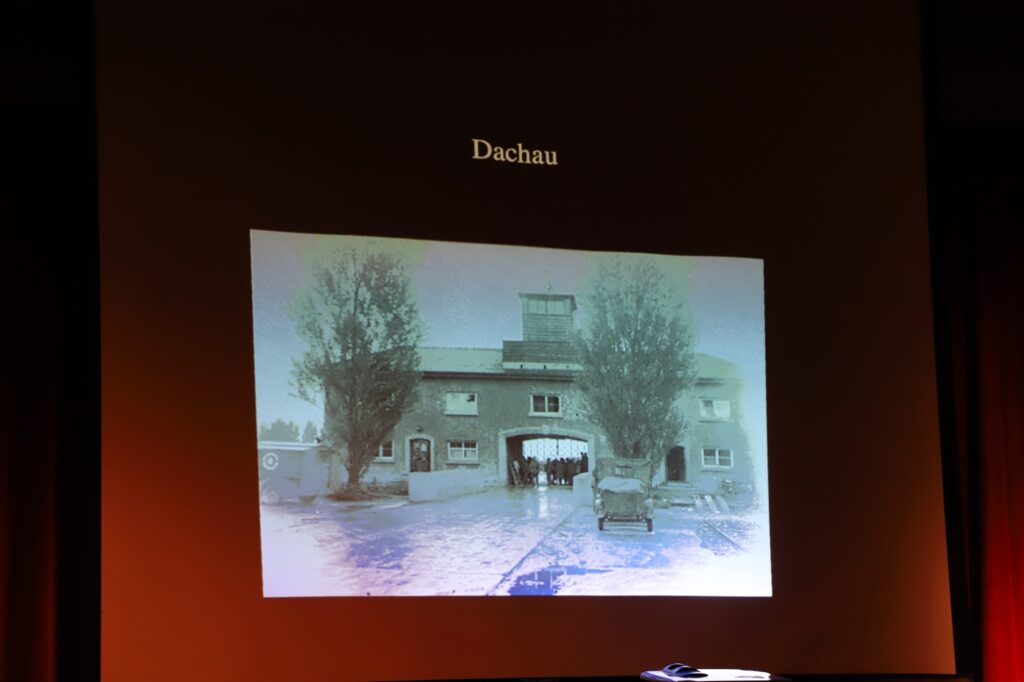
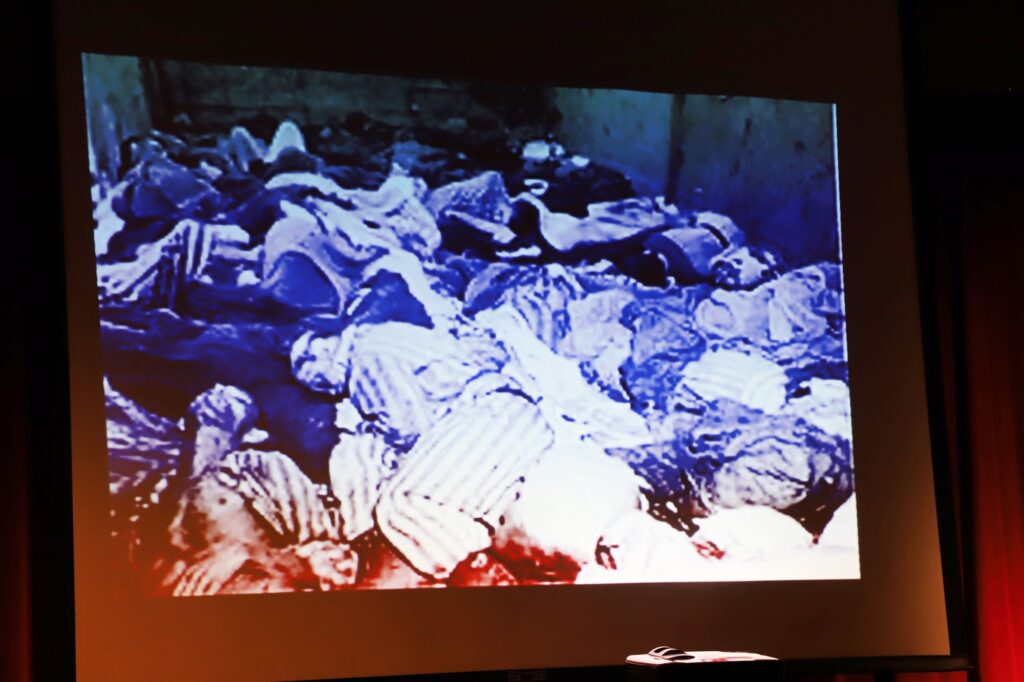
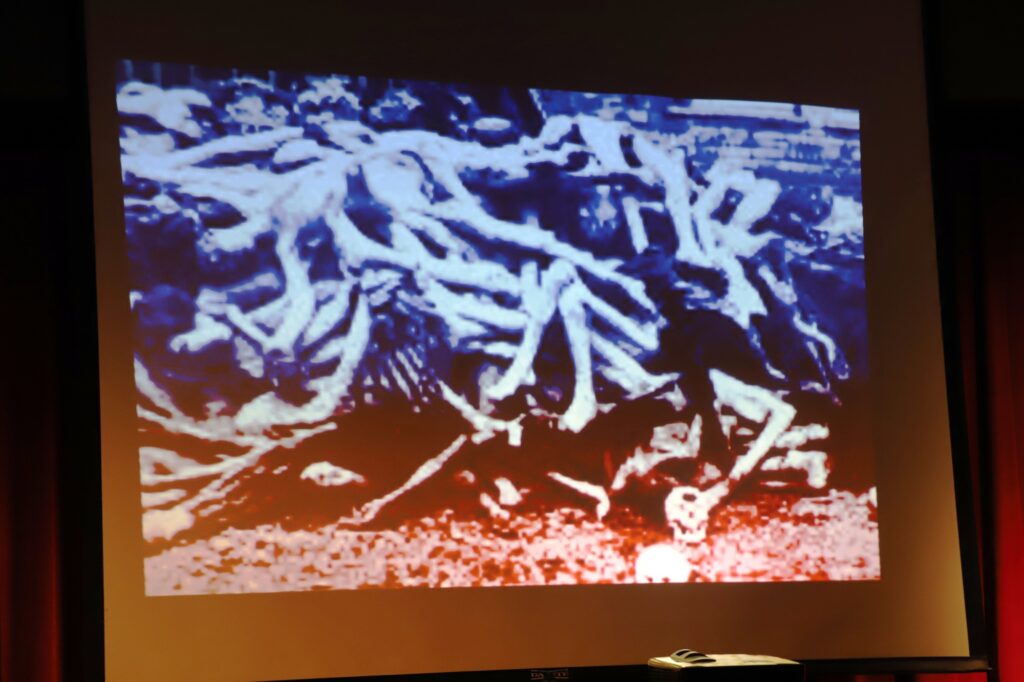

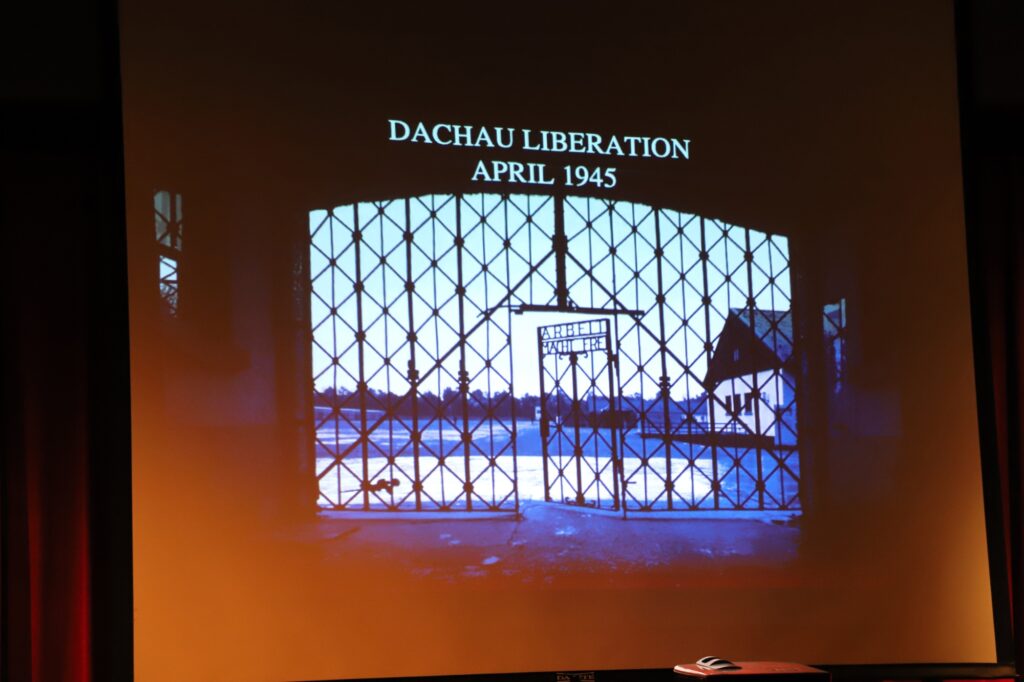
In an incredible twist of fate, he found Lola again. After liberation, Ben was recovering in the monastery-turned-hospital at St. Ottilien, which also served as a displaced persons camp. There, young Holocaust survivors were receiving care and regrouping, many training to immigrate to Palestine as part of an underground mission known as the Chalutzim. Ben, having survived against all odds, was selected to join this mission and was set to leave the very next day.
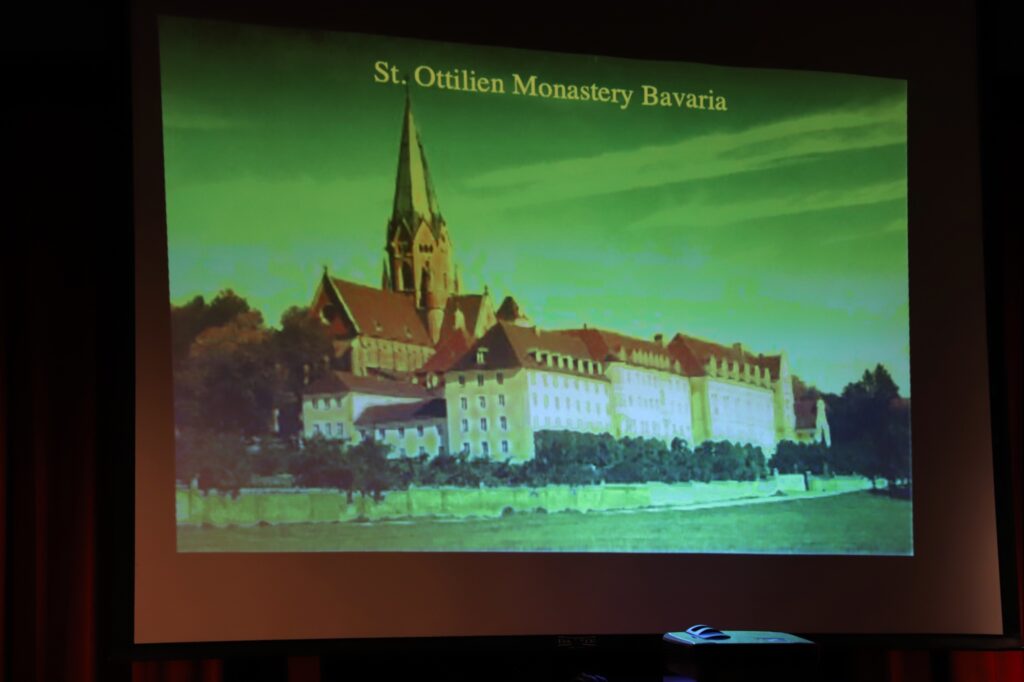
Before his departure, he visited a fellow survivor named Rachel who had fallen ill and was being treated in the hospital. While sitting with her, a nearby woman took notice. She asked Rachel who the man was with the wavy hair. When Rachel replied, “That’s Ben Lesser,” the woman was stunned. “That’s my brother,” she whispered. It was Lola.
Lola had been admitted to the hospital after slipping on ice and injuring her ankle while pregnant. When she heard her brother was in the same room, she feared he might still leave for Palestine. She told Rachel to bring him over immediately and pretended to be gravely ill, saying she was dying. Ben rushed to her side, and when he saw her, he realized the truth: she was alive and expecting a child.
Overwhelmed with emotion, Ben abandoned his plans to join the Chalutzim mission and chose instead to stay with Lola. It was a reunion neither of them could have imagined after all they had endured.
Together, they later moved to New York and eventually to Los Angeles, where Ben built a new life from nothing. He became a successful real estate broker, employing 70 people at one point.
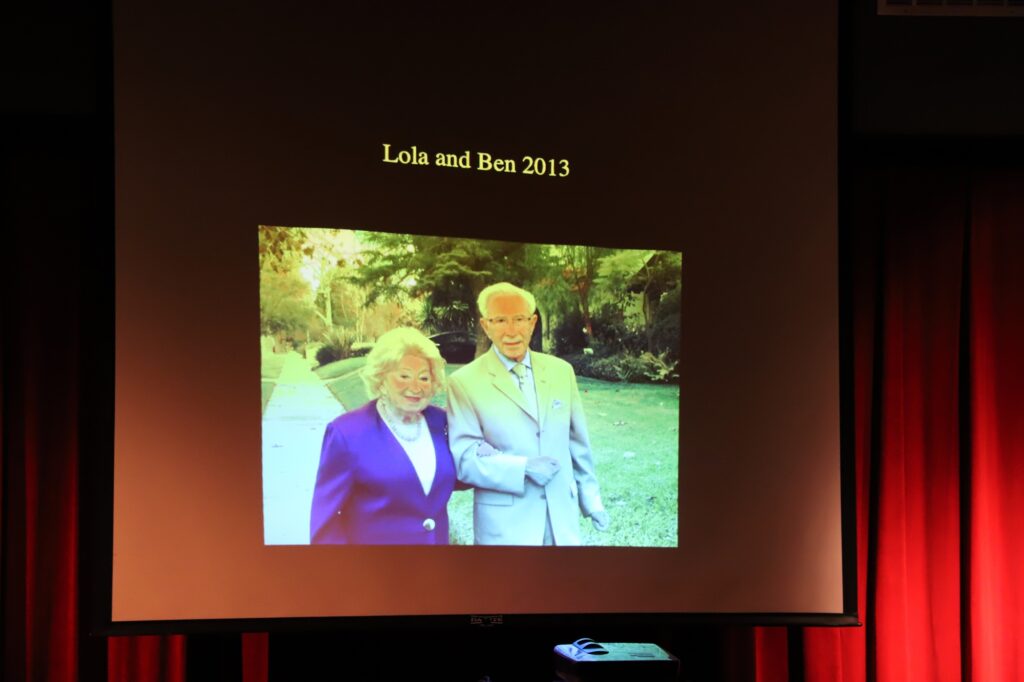
For years, he didn’t speak about the Holocaust. But when his grandson asked him to speak at school and after watching Schindler’s List, he began to share his story publicly. That was the beginning of the ZACHOR Foundation, which he and Robyn now operate. The foundation’s mission includes teaching tolerance, offering remembrance pins, and encouraging youth to take the “Never Again” pledge and shout out against hate.
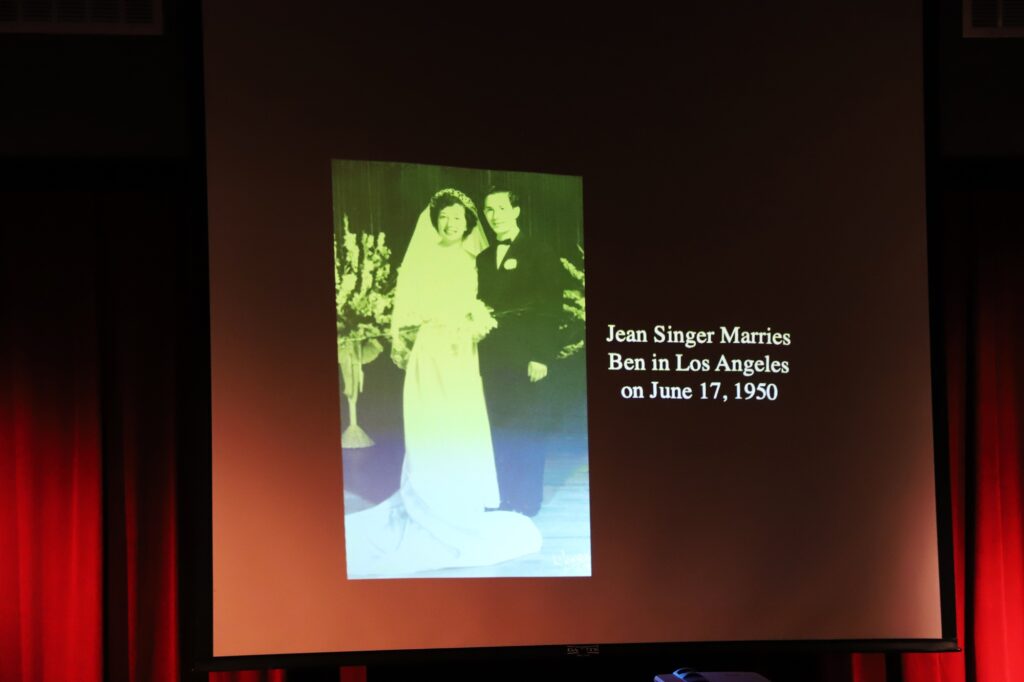
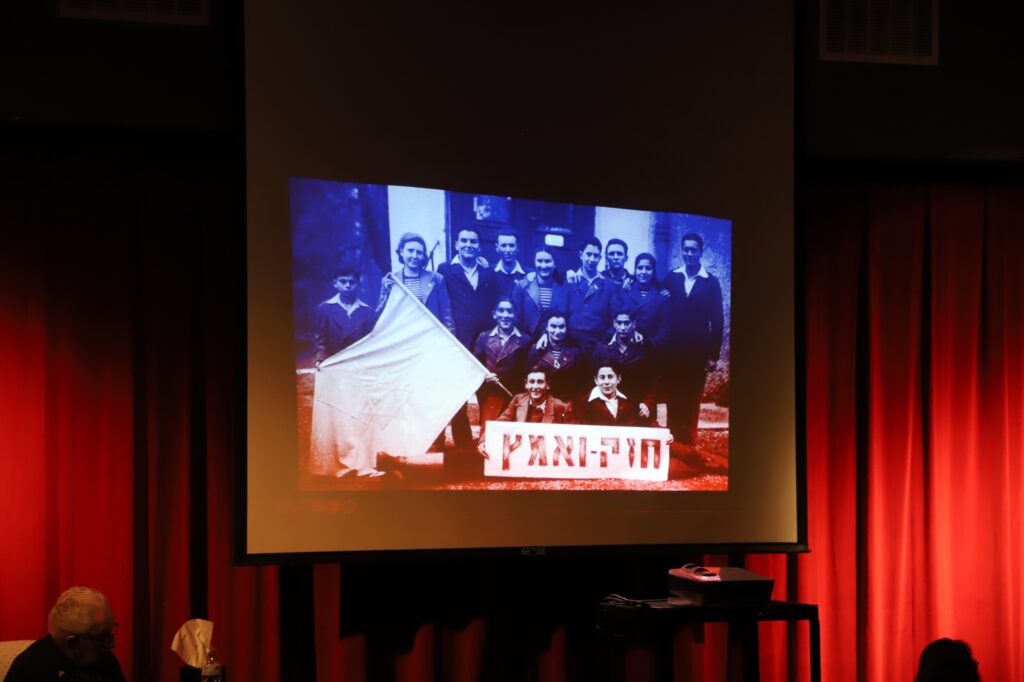
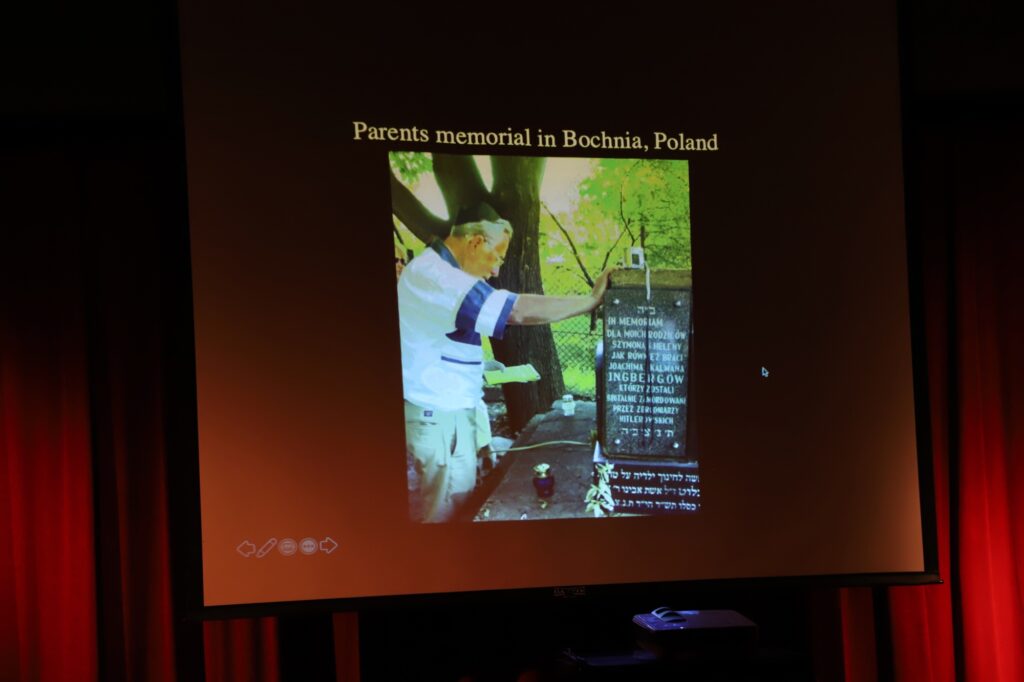
“Hatred doesn’t begin with killing,” Lesser told the PVHS students. “It starts with words. With propaganda. With silence.”
At the close of the presentation, he asked the students to hold hands and repeat after him:
“Never again. Never again. Never again.”
After the chant, many students were visibly moved. Lesser may be one of the last living survivors to share such a story in person. On that day, in that room, he did more than share history—he passed on a sacred responsibility to remember, to speak up, and to never allow hate to take root again.
May we remember. May we shout out. May we promise: Never again.
For many students in the audience, the lasting impression was not just the horror of what Ben Lesser endured, but the strength it took to keep going. Despite witnessing unimaginable cruelty, losing nearly everyone he loved, and enduring physical torment, Lesser rebuilt his life with purpose and grace. One student asked him if he still practiced religion. Lesser paused, then explained that during the Holocaust, he lost his faith. “How can there be a God,” he asked, “and allow this to happen—children thrown alive into fiery pits?” But over time, he said, he began to reclaim his belief. “God was weeping too,” he said. “He gave us free will, and humans chose hate. But we must choose love.”
The impact of Lesser’s visit will not soon be forgotten. His voice, weary but firm, carried the weight of history, of memory, and of survival. In that auditorium, generations away from the Holocaust, students bore witness to living testimony. It was, as stated at the start, likely a once-in-a-lifetime opportunity.
Ben Lesser survived the Holocaust, but he lives now with purpose: to make sure the world never forgets.
And on this day in Pahrump, they remembered.
To learn the full story of Ben Lesser’s survival, courage, and the life he rebuilt after the Holocaust, all are encouraged to explore his memoir, “Living a Life That Matters: From Nazi Nightmare to American Dream.” The book offers a powerful and deeply personal account of resilience, loss, and hope. Copies are available at the PVHS library, online, and through the ZACHOR Foundation website.

*This presentation was organized by Mr. Stanley Sutton and the PVHS History department.


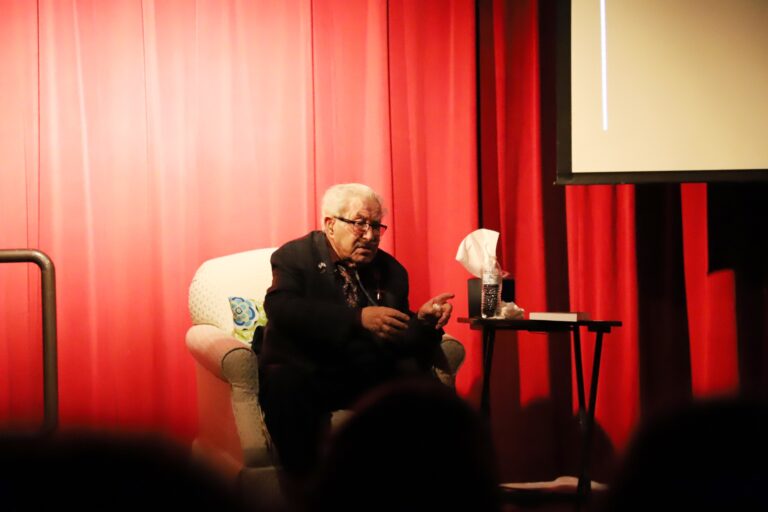


1 Comment
A huge shout out to Mr. Stan Sutton, and the Social Studies department, at PVHS for organizing this once in a life event for the students of NCSD.